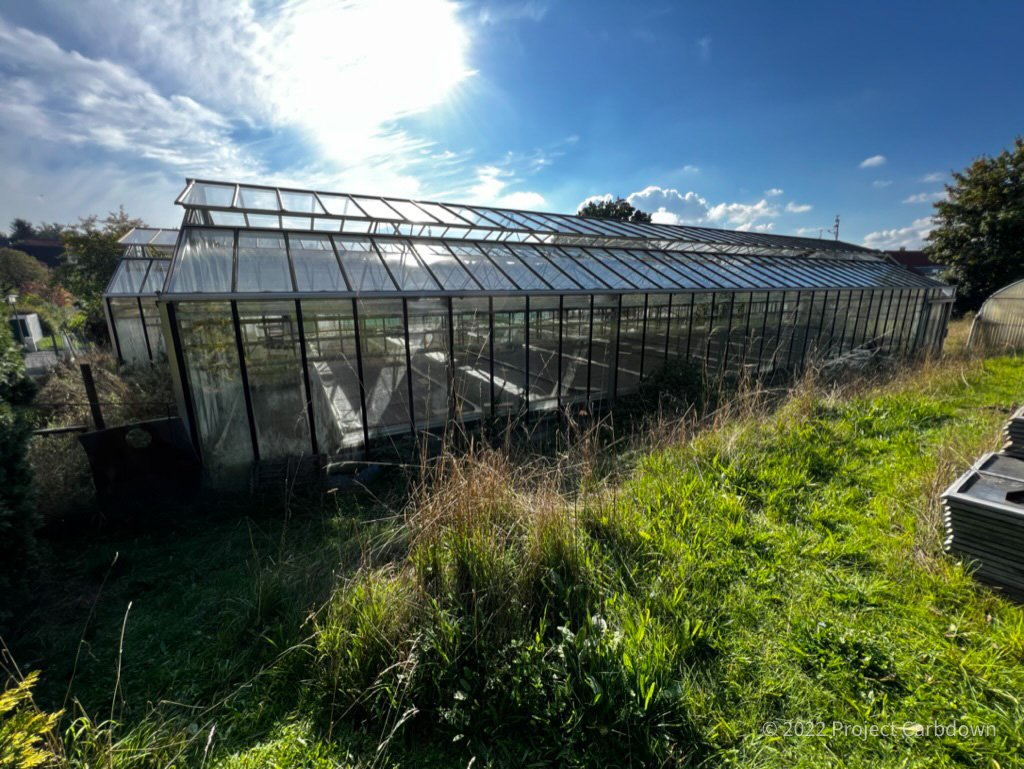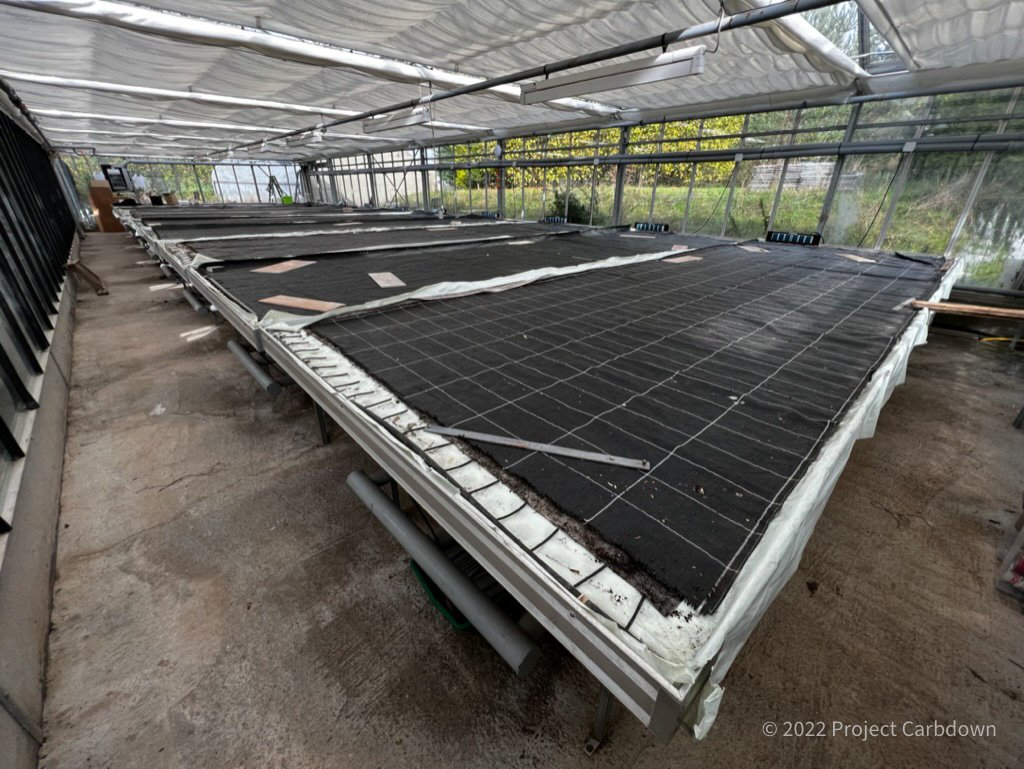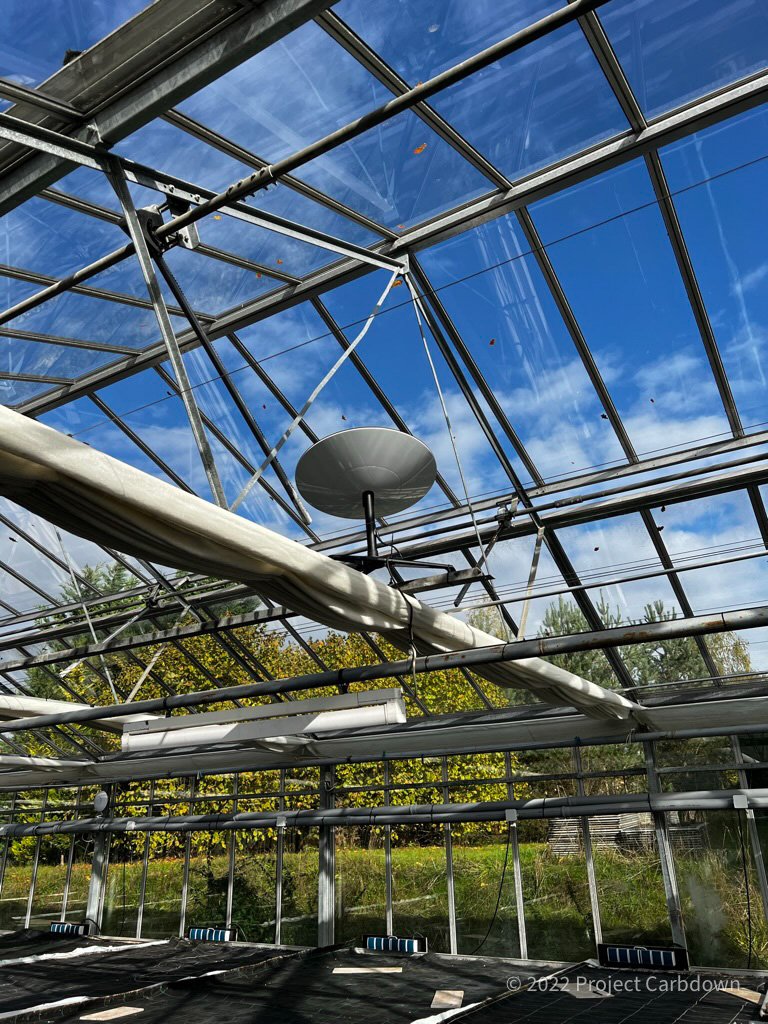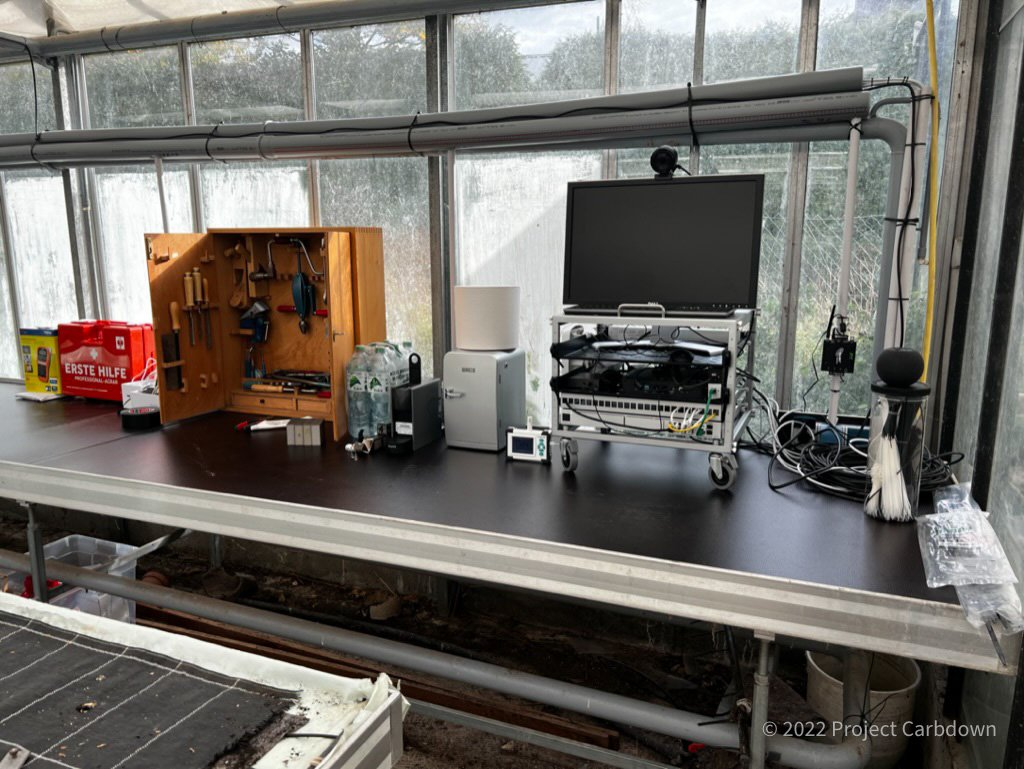Project Carbdown’s next step: We will set up a large scale greenhouse experiment with hundreds of pots
To stop global warming we will need to stop CO₂ emissions and we will also need to remove CO₂ from the air. One promising option for this seems to be Enhanced Rock Weathering (ERW). This approach removes CO₂ from the environment through the dissolution of basalt rocks whereby the CO₂ is transformed into a new chemical form (anions) and the basalt rock produces cations balancing the anions.
But measuring ERW processes in open nature is a major, still unsolved challenge.
Doing proper MRV (monitoring, reporting and verification) for ERW is much harder than for many other Carbon Dioxide Removal (CDR) technologies: How do we measure this? There is no pipe with CO₂ flowing through it or a pile of e.g. biochar that can be easily measured!
We know of a handful of measurement approaches that might be suitable. But we haven’t seen a comparison of them or a scientific consensus, which ones are actually able to tell us how much CO₂ a hectare of cropland captures after basalt application in what time.
We want to overcome the current gap between weathering rates measured by different measurement methods by applying several of them on the same soils/rocks/pots. These approaches can be sorted into 3 groups:
Measure total alkalinity produced as a result of CO₂ removal during basalt rock dissolution in the leachate waters over x years (and model the dissolved basalt rocks).
Measure the remaining basalt rocks after x years (and model the removed CO₂ as alkalinity in the leachate waters).
Measure element fluxes which may be suitable proxies for the weathering or measure carbon fluxes directly using analysis of element/isotope fluxes of e.g. C, Li, Mg, K in gas, solids, fluids, and crops.
Alkalinity measurement in leachate is in our understanding the prime candidate for ultimately exact measurements (we have been working with this approach since 2020). It actually measures the effect on the carbon flux, but it is very slow: apparently it can take years for the full weathering signal to reach a depth of 40-60 cm due to being slowed down by the so-called “exchangeable fraction” where the cations produced from the rock weathering are kind-of-“parked” for some time, after the rock minerals dissolved. Since only the non-parked cations end up in the leachate, the leachate's alkalinity gives us a lower bound (minimum estimate) of how much CO2 was captured.
Due to the same parking-garage effects the measurements of the remaining basalt rocks give us the upper bound of the weathering: What we measure here is how much rock has been dissolved (e.g. our portfolio company Lithos Carbon does this), but some of the dissolved cations may still be “parked” and might have not actually drawn down CO₂ yet, they need more time. Again, this might take months and years to materialize. We don’t know yet.
The other methods likely fall somewhere in between these two. In a perfect world all methods should give us a converging number for the CO₂ capture of a field over time. Maybe not at the same moment in time, but ultimately we will need more than one method of measuring the CDR to make ERW a trustworthy option for CDR and our planet’s future.
Which brings us to a key question: Where are the experiments that compare all measurement approaches and who is doing this? We do not know of any project in this space.
If we want to get anywhere near capturing mega/gigatons of CO₂ with ERW in 30 years we need to speed up the knowledge-generation of measurements for the speed of ERW. In fact, we need to generate this knowledge faster than we could get it at nature's speed with field experiments at ambient conditions. Because during winter (lower temperatures) or dry periods (limited to no water) the basalt rock dissolution will dramatically slow down and might even temporarily come to a halt.
Our next challenge
We have chosen this issue as our next challenge for Project Carbdown: We will set up an extensive greenhouse experiment involving hundreds of pots (and lysimeters which collect the leachate waters) filled with different mixtures of soils, basalt rock dusts and plants. Our goal is to conduct experiments such that we can sample for all known (and yet unknown) ERW analytical approaches. This way, all measurements will be from the same set-up, the same water, the same soil and under the same environmental conditions. This should enable us to find out whether the measurement approaches converge on the same CDR rates. Or at least it should let us get closer to the answers.
The job of the greenhouse project is….
… to create weathered samples at the highest possible speed.
To be more exact: The job is to produce soil/water/gas samples/measurements of a diverse set of variations/combinations of soils and weathering rock treatments (with replicas) that will work with all weathering measurement methods we currently know of — while making use of all available/viable tricks to speed up the weathering processes. We do this in a greenhouse because weathering data doesn’t grow fast enough in nature, the climate crisis can’t wait for so long.
How does this work?
To quickly generate this deeper understanding of ERW we need to “speed up time” which means accelerating basalt rock dissolution by going into a heated, irrigated, and climate controlled greenhouse with our experiments. A second conceptual reason for this approach is that we can't run hundreds of experiments on fields with different soil types scattered all over e.g. Germany/Europe, that would be a logistical nightmare. Instead of going to the fields, we bring their soils to us.
It is our understanding that it does not make much sense to create many different types of ERW experiments (to optimize ERW), especially not in open nature, as long as we do not have a proven, reliable measurement method (or at least some kind of proxy metric that helps to lower the uncertainties substantially). Which we don’t have right now, the uncertainties are simply too large at the moment. However, as soon as we have a proven, reliable measurement method that can be used on open fields we can break out of the greenhouse again and set up experiments on many fields with many different rocks, etc.
It should not come as a surprise to you that we have already started this new Project Carbdown experiment! So far we rented a greenhouse and fitted it with 600 m of wires, a Starlink Internet connection and extensive network/monitoring equipment.
If you are a scientist that works on MRV and/or measurements for ERW and you would be interested to add your method and expertise to our experiment, please contact us. The more measurement methods we can use, the better. Become a part of the group that moves towards a standard MRV-tech for EW.
And, finally, we need hands-on help in the greenhouse! Here is our current job opening: Klima-Job: Wissenschaftliche*r Mitarbeiter*in gesucht (German)
Stay tuned for more!




